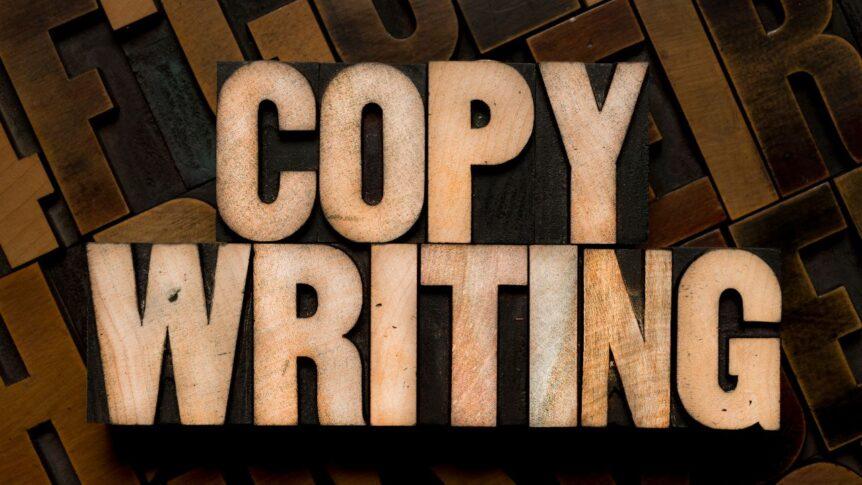Fourth in the series:
Some analysts suggest that over 40% of the success of a Direct Mail campaign is directly related to your Offer and Call-to-Action. Therefore, the copy you use is one of the most significant and impactful elements, of your entire campaign.
Using well-written copy captures the reader’s attention and tells them what they need to know about your product or service. Paired with beautiful fonts and striking images, it’s hard to beat skillfully written copy.
In the guide below you’ll find helpful tips on writing your own direct mail Copy That Sells.
Research Your Audience
Having a good idea of what the recipient of your piece wants and needs will help you create compelling copy that inspires them to act. Using market research is a keyway to learn you’re your audience is looking for. There are several approaches to gathering market research:
- Look for common traits and patterns among existing customers in your In-house Customer List.

- Consider using the tools from a data consultant to determine if they live in a certain area; are there recurring trends in among buyers with similar demographics?
- Staff members who deal directly with customers and leads should be able to provide insight to your intended recipients. Consult your Customer Service Staff – look at their most common needs and complaints; what products or services are on their “wish list”. This information will help you tailor your marketing message to address their needs.
- Conduct surveys. Call, email or mail current customers for feedback on whether you’re meeting their needs and expectations. Once you know what audiences are looking for, you can emphasize those aspects of your product or service in your ad copy.
WRITE GRIPPING HEADLINES & SUBHEADS
As any newspaper editor will tell you, your Headline and Sub-Headings are the best way to pull readers to your article. An audience should be able to read the headline and subheads and come away with an understanding of what your piece is about without reading anything else.
The same is true in direct mail marketing. Headlines and subheads are must-have copy elements of any well-written direct mail piece. Your goal should always be to tell a story with your headings.
TIPS FOR CREATING DIRECT MAIL HEADLINES & SUBHEADS
Keep it short and sweet. To avoid losing your audience, keep your headlines and subheads as concise as possible. A good rule of thumb to follow, regardless of format, is that the maximum length most readers can comprehend at a glance is 8 words. But on the other hand, your subheads can be a bit longer than your headlines.
After you develop a list of possible headlines and subheads, A/B test them against each other to see which ones perform best (see our upcoming blog for more on A/B Testing!)
Headings should include the Benefits of your offering. Some of the best headlines frequently include your top benefit. This helps you catch your audience’s attention and lets them know right up front that you have a solution to offer. When writing copy that sells use your subheadings to then further explain the benefits of your product or service.
Challenge your audience with a question. An excellent way to compelling headlines and subheads is to ask the piece recipient a question. This demonstrates that when writing copy that sells you understand their needs and pain points.
CLEARLY EXPLAIN YOUR BENEFITS
 Be clear and concise when touting the benefits of your product or service. Using short sentences and bulleted lists help make your piece scannable and provides quick product/service takeaways. The reader gets the gist of the offer without slogging through blocks of text.
Be clear and concise when touting the benefits of your product or service. Using short sentences and bulleted lists help make your piece scannable and provides quick product/service takeaways. The reader gets the gist of the offer without slogging through blocks of text.
Explaining the benefits and features of your product or service to prospects is the goal in writing sales copy that sells effectively. You’ll need to know the difference between a Feature and a Benefit.
- A Feature is a particular aspect of your product or service that provides a benefit to customers.
- A Benefit is the result of the product or service having that particular feature.
For example, a Feature of a car might be its Anti-Lock brakes. The benefit of that feature is shorter, safer stops. So you might write “Never skid when braking again!” to express how this feature benefits prospects. Always emphasize the benefits your product or service in terms of how it will improve your prospects’ lives.
Copy That Sells – Strategies on how to explain
THE BENEFITS OF YOUR PRODUCT OR SERVICE
- Begin the sentence with the Benefit. For example, say “Reduce chances of a skid”, instead of “Anti-locks brakes help you stop shorter”.
- Create an emotional reaction. Purchases are typically emotionally driven decisions, vs logical ones. Speak to you readers feelings and how the product will make their lives easier.
- Avoid using industry jargon or lingo. You don’t want to alienate prospects. Speaking down to your audience while writing copy that sells by using unknown or industry-specific language can make their understanding of your offer more confusing.
Keep it SHORT
Most direct mail pieces do not need a lot of copy to get the offer across to the reader. Your text should be concise, but long enough to make a compelling case to the reader why they need your product or service. If you try to put yourself in your audience’s shoes when creating copy, you’re more likely to be convincing when describing what’s in it for them.
- One idea, one paragraph. Talking about multiple concepts can confuse readers. Keep your messaging relevant and impactful by making sure every sentence in your paragraph supports the same main point.
- Keep it short. Again, paragraphs should be no longer than 2-3 sentences. Large blocks of copy are overwhelming and may lose your audience. The general rule is that half your piece should be made up of white space.
- Convey your message or story. In most cases, your Company, product, or service has an interesting origin story. Tell readers about it to grab their attention and get them interested.
INCLUDE AN IRRESISTIBLE OFFER
The most important piece of copy for your direct mail piece is your Offer. Bottom line, your offer explains to prospects what they will receive if they take action. Therefore, your offer must be so exciting and valuable to the recipient that there’s no way they can turn it down.
TIPS FOR CREATING DIRECT MAIL OFFERS
- Embed compelling words. Make things interesting and attention-grabbing by using words like “free.” This gets prospects excited.
- The clock’s ticking. It’s important to create a sense of urgency with your offer. Motivate prospects to act right away, create a sense of hurry to take advantage of it. Try using phrases such as:
- “Offer good through [date],”
- “limited time only,”
- “while supplies last.”
- It’s all risk-free! Create a sense of comfort by including a risk-free offer, and then show them know what the next steps are. Make sure they know what to expect, always be transparent with them. Examples of risk-free offers include money back guarantees or the ability to return a product if the customer isn’t satisfied.
MAKE THE CTA OBVIOUS
The CTA, or Call-To-Action, is a sentence or phrase designed to tell the recipient what they need to do next: Call us; Go Online; or Visit our Store. The intention is for your CTA to tell people how to claim the offer and helps move them through the sales funnel.
TIPS FOR CREATING DIRECT MAIL CTAS
Make sure to always write CTAs that make taking the action you’re requesting seem easy and effortless. Studies have shown that using an effortless word like “get”, as opposed to what’s perceived as an effort word, like “order”, increased conversions by 68%. When you ask someone to “order” implies the person has to make some sort of effort to get your offer, vs. simply just receiving it.
A rule-of-thumb is “Stick to one CTA per piece”. It’s OK to repeat your CTA multiple times on your direct mail piece, just don’t include several different CTAs.
Be crystal clear. Your CTA should be exact and easy to understand. Use as few words as possible and be specific about what you want prospects to do.
DIRECT MAIL CTA EXAMPLES
- Get yours now
- Visit Our Website
- Call Us Today
- Shop In Store
Creating powerful and compelling marketing copy that sells is critical to the success of your direct mail campaign. Good copy tells the recipient what they need to know to take advantage of your offer, and how accepting your offer will provide them some benefit from doing so.
Using copy effectively and knowing what your audience needs and wants, is the key to a successful direct mail campaign. If you need a direct mail printing partner with decades of experience on how to best use Copy That Sells to support your brand’s marketing efforts, Reach out to us at Federal Direct today to learn how we can help you make the right color and image choices for your next direct mail campaign.
P.S. This same approach also works on writing web copy that sells too!
